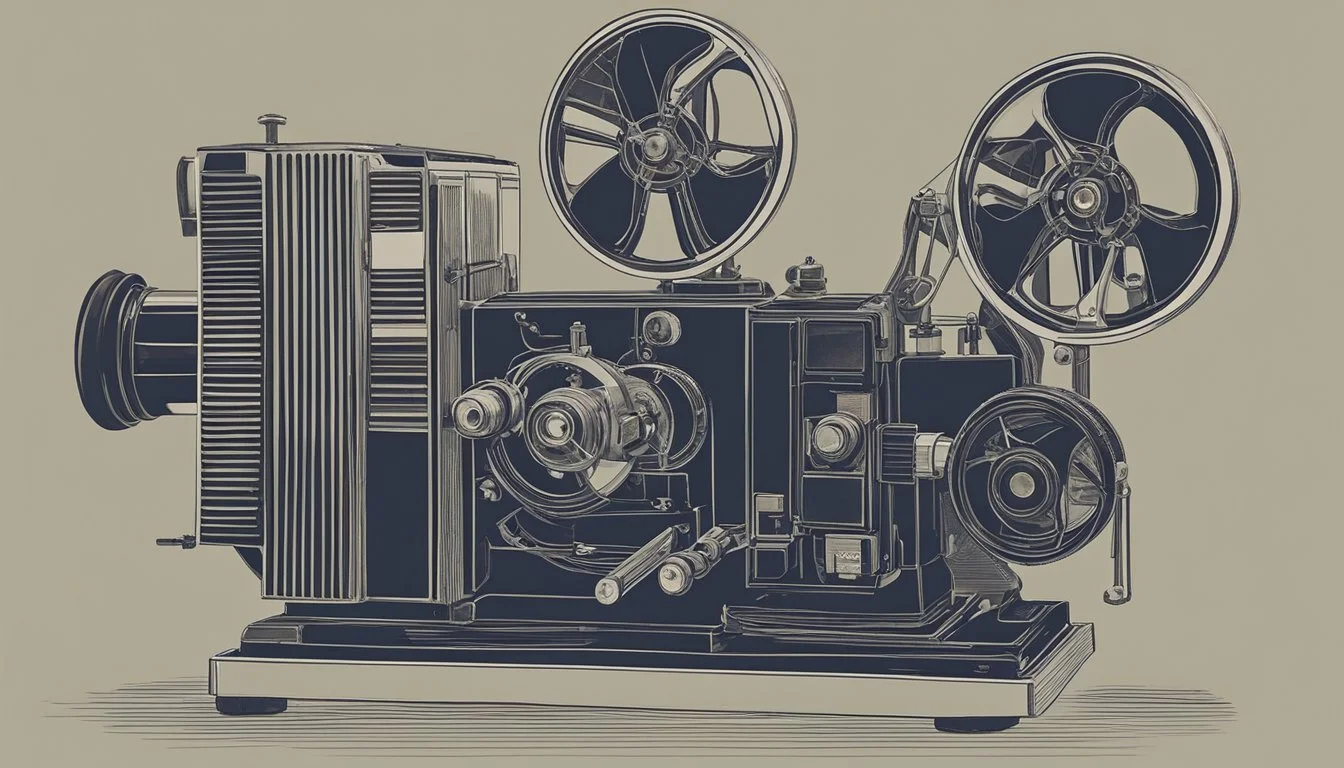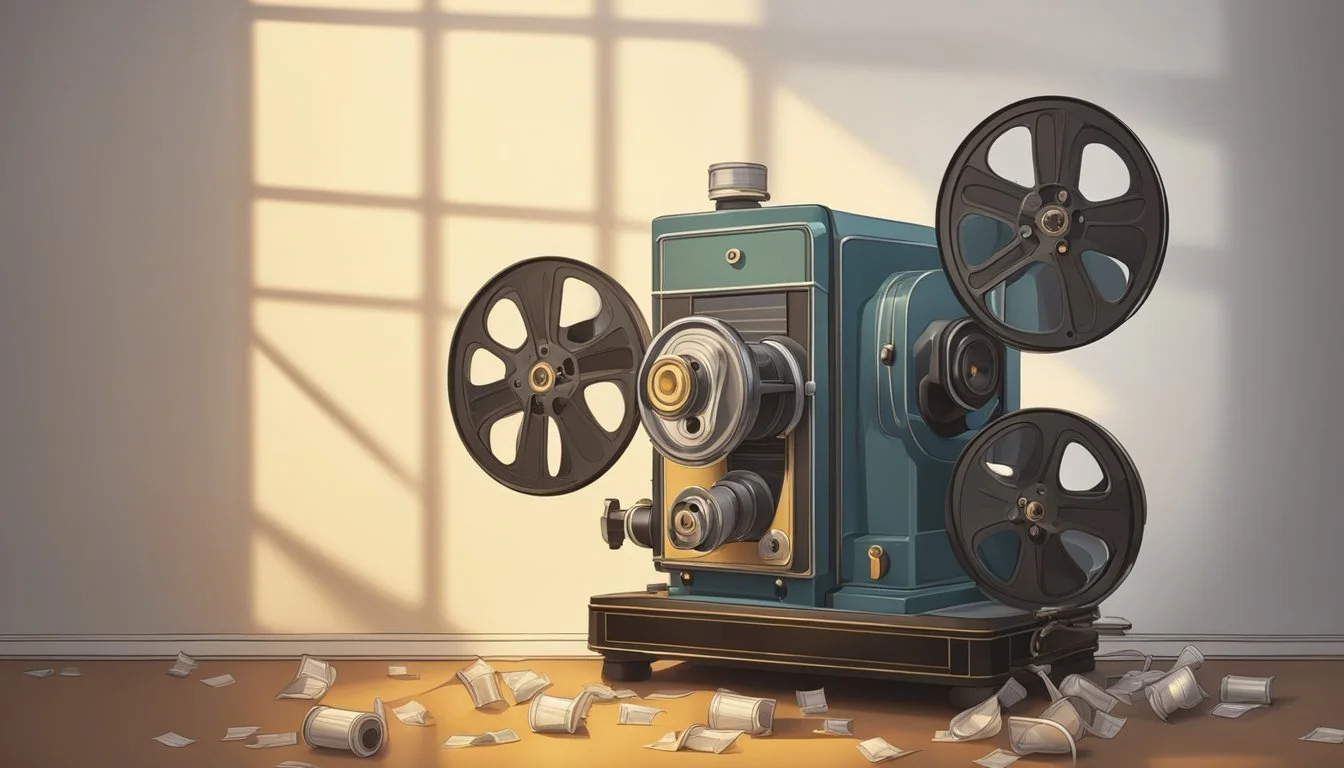Archival Storytelling: Using Old Footage in the Menendez Brothers' Series
Reviving the Past for Modern Television
Archival footage breathes new life into the Menendez brothers' story, offering viewers a unique window into the past. By incorporating authentic video and audio from the era, documentaries and series transport audiences back to the late 1980s, immersing them in the cultural context surrounding the infamous murders.
Recent productions have tapped into a wealth of archival material to provide fresh perspectives on the case. Talk show interviews, news reports, and courtroom footage allow viewers to witness key moments as they unfolded. This approach brings an unparalleled sense of immediacy and realism to the storytelling.
The use of archival content also serves to highlight previously overlooked aspects of the Menendez brothers' narrative. By revisiting original sources, filmmakers can shed light on nuances that may have been missed in earlier tellings. This combination of historical footage and modern analysis creates a compelling blend of nostalgia and contemporary insight.
Archival Storytelling in True Crime
Archival footage plays a crucial role in true crime storytelling, bringing authenticity and historical context to narratives. It allows viewers to experience past events through a contemporary lens, enhancing the emotional impact of these stories.
Evolution of the True Crime Genre
The true crime genre has transformed significantly over the years, with archival materials becoming integral to its storytelling techniques. Early documentaries relied heavily on interviews and reenactments. As technology advanced, filmmakers gained access to vast archives of news footage, home videos, and courtroom recordings.
This shift allowed for more immersive storytelling. The O.J. Simpson trial in 1995 marked a turning point, with extensive media coverage providing a wealth of archival content for future productions. True crime series now blend archival footage seamlessly with modern cinematography, creating compelling narratives that captivate audiences.
The genre's popularity has surged, fueled by streaming platforms and podcasts. This demand has pushed creators to find innovative ways to use archival materials, often uncovering new perspectives on well-known cases.
The Art of Integrating Archival Footage
Integrating archival footage into true crime narratives requires skill and sensitivity. Filmmakers must balance historical accuracy with storytelling impact. They carefully select clips that provide context, evoke emotions, or reveal new insights into a case.
Ethical considerations are paramount. Producers must respect victims' rights and avoid sensationalism. They often combine archival materials with expert interviews and modern reenactments to create a comprehensive narrative.
Sound design plays a crucial role in enhancing archival footage. Original audio may be restored or supplemented to improve clarity and emotional resonance. Music choices can dramatically affect how viewers interpret historical scenes.
Editors face the challenge of maintaining visual consistency between old and new footage. Color grading and aspect ratio adjustments help create a cohesive viewing experience. Some productions use creative transitions to move between time periods seamlessly.
The Menendez Brothers' Narrative
The Menendez brothers' case shocked the nation in 1989, sparking intense media coverage and public debate. Their story involves family tragedy, allegations of abuse, and a high-profile murder trial that captivated audiences.
Who Are the Menendez Brothers
Lyle and Erik Menendez were born into a wealthy Beverly Hills family. Their father, Jose Menendez, was a successful entertainment executive, while their mother, Kitty, was a homemaker.
The brothers led seemingly privileged lives, attending prestigious schools and enjoying luxurious vacations. However, beneath the surface, they claimed to have suffered years of physical, emotional, and sexual abuse at the hands of their parents.
This alleged abuse became a central point of their defense during the trial, raising questions about family dynamics and the long-term effects of trauma.
Timeline of the 1989 Murders and Trial
On August 20, 1989, Jose and Kitty Menendez were shot multiple times in their Beverly Hills mansion. The brothers initially claimed they were not home during the murders.
Key events:
August 20, 1989: Jose and Kitty Menendez murdered
March 1990: Lyle arrested
March 1991: Erik surrenders to police
July 1993: First trial begins, ends in hung jury
February 1995: Retrial begins
March 1996: Both brothers convicted of first-degree murder
The trial gained immense public attention, with courtroom footage broadcast nationwide. The brothers' emotional testimony about their alleged abuse became a focal point of the proceedings.
Public Perception and Media Impact
The Menendez case became a media sensation, dominating news cycles and sparking intense public debate. Television coverage of the trial drew millions of viewers, turning the brothers into household names.
Public opinion was divided:
Some viewed the brothers as cold-blooded killers
Others sympathized with their claims of abuse
The case raised questions about:
The role of childhood trauma in criminal behavior
The impact of wealth and privilege on the justice system
The ethics of televising high-profile trials
Media portrayals of the Menendez brothers have evolved over time, with recent documentaries and dramatizations revisiting the case through new lenses. These reexaminations have prompted ongoing discussions about justice, family dynamics, and the complexities of criminal psychology.
Uncovering the Netflix Series
Netflix's Menendez brothers series brought renewed attention to the infamous case. The show's creators and cast aimed to provide a fresh perspective on the events.
Development by Ryan Murphy and Ian Brennan
Ryan Murphy and Ian Brennan, known for their work on popular series, took on the Menendez brothers' story for Netflix. They approached the project with a focus on exploring the family dynamics and societal context surrounding the murders.
The creators conducted extensive research, drawing from court records and interviews. They aimed to present a nuanced portrayal of Lyle and Erik Menendez, examining their motivations and the complexities of their case.
Murphy and Brennan's vision for the series included a blend of dramatic reenactments and archival footage. This approach allowed them to create a compelling narrative while maintaining a connection to the real events.
Casting and Portrayals
The casting process for the Netflix series was crucial in bringing the Menendez brothers to life on screen. Nicholas Chavez and Cooper Koch were selected to portray Erik and Lyle Menendez, respectively.
Chavez and Koch underwent extensive preparation for their roles. They studied court footage, interviews, and other materials to capture the mannerisms and personalities of the brothers.
The actors faced the challenge of portraying complex characters who committed a heinous crime while also exploring their alleged experiences of abuse. Their performances aimed to strike a balance between empathy and accountability.
Supporting cast members were chosen to represent key figures in the case, including family members, lawyers, and witnesses. The ensemble worked to recreate the tense courtroom atmosphere and family dynamics central to the story.
Legal Proceedings and Reactions
The Menendez brothers' case captivated the public with its dramatic twists and controversial defense strategy. Key players in the courtroom drama included passionate attorneys, conflicting witness testimonies, and jurors grappling with complex evidence.
The Case's Prosecution and Defense Strategies
The prosecution portrayed Lyle and Erik Menendez as cold-blooded killers motivated by greed. They presented evidence of the brothers' lavish spending after the murders and emphasized premeditation.
The defense, led by Leslie Abramson, argued the killings were acts of self-defense stemming from years of abuse. They called witnesses to testify about the brothers' alleged sexual abuse at the hands of their father.
Judalon Smyth, a former mistress of the brothers' therapist, became a key witness. Her testimony raised questions about client confidentiality and the therapist's role in the case.
Jurors, Witnesses, and Legal Teams
The trial featured intense courtroom battles between prosecutors and defense attorneys. Jurors faced the difficult task of weighing conflicting evidence and emotional testimonies.
Witnesses included family members, psychologists, and forensic experts. Testimony about gunpowder residue and crime scene details played crucial roles in both trials.
The legal teams' strategies evolved as new evidence emerged. The defense's abuse claims divided public opinion and sparked debates about the relevance of family history in murder cases.
Hung juries in the first trial led to a retrial, where prosecutors adjusted their approach. The case's complexity and media attention put immense pressure on all involved in the legal proceedings.
Thematic Analysis of the Menendez Narrative
The Menendez brothers' case intertwines complex themes of family dysfunction, violence, and societal privilege. These elements shaped public perception and legal arguments surrounding the shocking murders.
Incest and Family Dynamics
Sexual abuse allegations played a central role in the Menendez brothers' defense. Erik and Lyle claimed their father, Jose Menendez, had subjected them to years of sexual and emotional abuse. This traumatic family dynamic became a key point of contention during the trials.
The brothers' lawyers argued that the abuse led to their violent actions. They portrayed the killings as desperate acts of self-preservation rather than premeditated murder.
Critics questioned the veracity of these claims, suggesting they were fabricated to gain sympathy. The incest allegations added a layer of complexity to the case, challenging jurors and the public to confront uncomfortable truths about family violence.
Pleading Self-Defense in High-Profile Cases
The Menendez brothers' legal team pursued a controversial self-defense strategy. They argued that years of abuse had created a life-threatening situation for Erik and Lyle.
This approach sparked debate about the limits of self-defense claims. Critics pointed out that the brothers had not been in immediate danger when they killed their parents.
The case highlighted challenges in applying self-defense laws to situations involving long-term abuse. It raised questions about how courts should handle cases where alleged victims claim to have acted against their abusers.
The Intersection of Wealth and Crime
The murders took place in the affluent community of Beverly Hills, adding a layer of intrigue to the case. The Menendez family's wealth and status became focal points in media coverage and public discourse.
Some viewed the brothers as spoiled rich kids who killed for inheritance. Others saw their privileged background as a facade hiding dark family secrets.
The case exposed tensions between public perceptions of wealth and the reality of domestic abuse. It challenged assumptions that financial privilege shields families from violence and dysfunction.
The Beverly Hills mansion where the murders occurred became a symbol of the case. It represented the stark contrast between the family's outward appearance and the tragedy that unfolded within its walls.
Impact on Popular Culture and Modern Media
The Menendez brothers case continues to captivate audiences, influencing modern media and sparking discussions across various platforms. Its portrayal in recent productions has reignited public interest and debate.
The Menendez Brothers in the Age of Social Media
TikTok users have embraced the Menendez brothers' story, creating viral content and sparking renewed interest. Young creators analyze trial footage, share theories, and express sympathy for the brothers. This trend has led to increased awareness among younger generations.
Social media platforms have become spaces for debate about the case's complexities. Users discuss topics like childhood trauma, abuse, and the justice system's handling of such cases.
The #MeToo movement has influenced perceptions of the brothers' abuse claims. Many now view their allegations through a more empathetic lens, considering the long-term effects of trauma.
Comparisons with Other Infamous Cases
The Menendez case is often compared to other high-profile crimes, particularly the Jeffrey Dahmer case. Both have received renewed attention through recent TV series and documentaries.
"Monsters: The Lyle and Erik Menendez Story" follows a trend of true crime adaptations, similar to the Dahmer series. These productions spark debates about the ethics of dramatizing real-life tragedies.
Court TV's coverage of the original trial set a precedent for televised court proceedings. This paved the way for the current era of high-profile legal cases becoming media spectacles.
Pop culture references, like Jay Leno's jokes during the trial, highlight how the case permeated mainstream entertainment. These references continue to shape public perception of the brothers and their crime.
Behind-the-Scenes: Crafting the Docuseries
The creation of the Menendez Brothers docuseries involved extensive research, interviews, and careful production decisions. Filmmakers worked diligently to uncover new information and present a comprehensive narrative.
Interviews and Research by Filmmakers
The production team conducted in-depth interviews with key figures connected to the case. Robert Rand, a journalist who covered the trials, provided valuable insights. Dominick Dunne, who wrote extensively about the murders, offered his perspective. The filmmakers also spoke with friends, relatives, and experts to gather a wide range of viewpoints.
Archival research played a crucial role. The team combed through court transcripts, news footage, and personal records. They unearthed previously unseen photographs and home videos, adding visual depth to the story.
The Role of the Director and Production Team
Director Alejandro Hartmann led the creative vision for the docuseries. He worked closely with editors to weave together archival footage, interviews, and reenactments. The team made careful choices about which elements to include and how to present them.
Production decisions focused on maintaining objectivity while creating a compelling narrative. The crew balanced factual accuracy with storytelling techniques. They used music, pacing, and visual elements to enhance the viewer's understanding of events.
Hartmann collaborated with legal experts to ensure the docuseries presented information accurately. The team also consulted with psychologists to provide context for the brothers' mental state and family dynamics.
Legal and Ethical Considerations
Using archival footage in true crime series raises complex legal and ethical questions. Creators must navigate copyright laws, privacy concerns, and the responsibility of portraying real events accurately.
Challenges in Retelling True Crime Stories
Retelling the Menendez brothers' case requires careful consideration of legal boundaries. Producers must obtain proper permissions for using court records and personal materials. Privacy rights of individuals connected to the case need protection.
Ethical concerns arise when depicting sensitive topics like childhood trauma and family violence. Creators face the challenge of balancing compelling storytelling with respect for victims and their families.
The use of archival footage can potentially influence public perception of the case. This raises questions about the impact on ongoing legal processes, such as parole hearings or potential retrials.
The Debate over Glorification versus Education
True crime series walk a fine line between educating the public and sensationalizing violent acts. Critics argue that extensive focus on perpetrators like the Menendez brothers may glorify their actions.
Supporters contend these shows can raise awareness about important social issues. The Menendez case, for example, sparked discussions about domestic abuse and childhood trauma.
Creators must consider how their portrayal might affect public opinion on the justice system. The series' perspective on topics like life sentences and potential parole can shape viewers' attitudes.
Ethical storytelling involves presenting multiple viewpoints, including those of victims, legal experts, and mental health professionals. This approach helps provide a more balanced and educational narrative.





